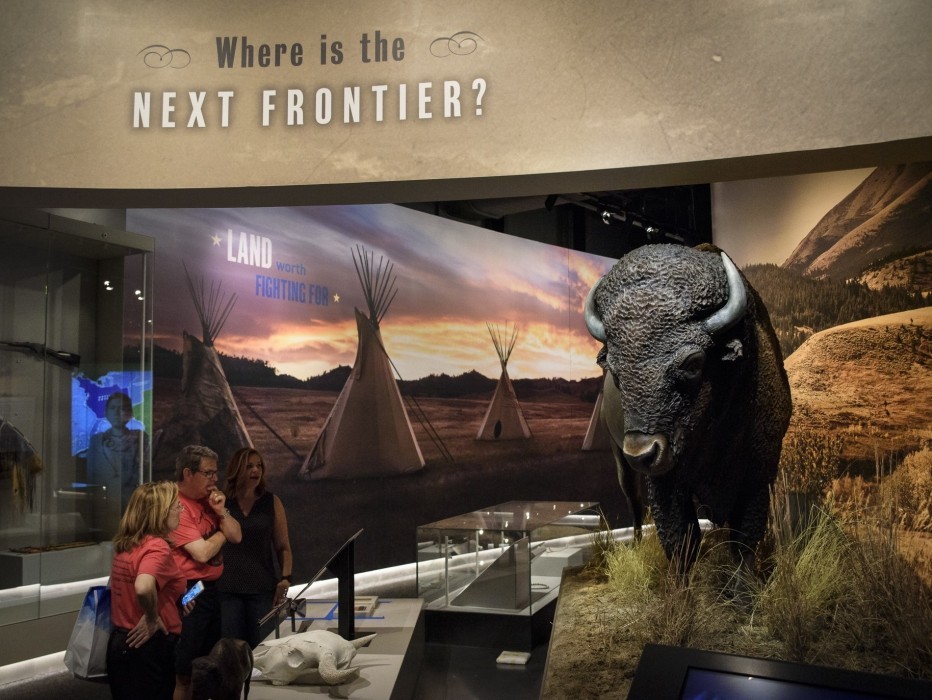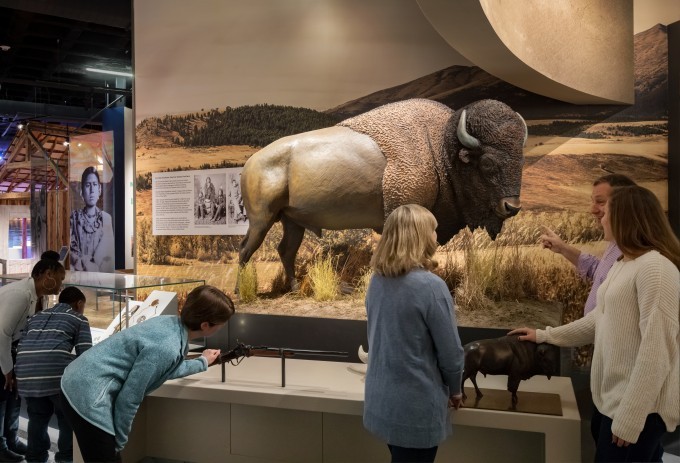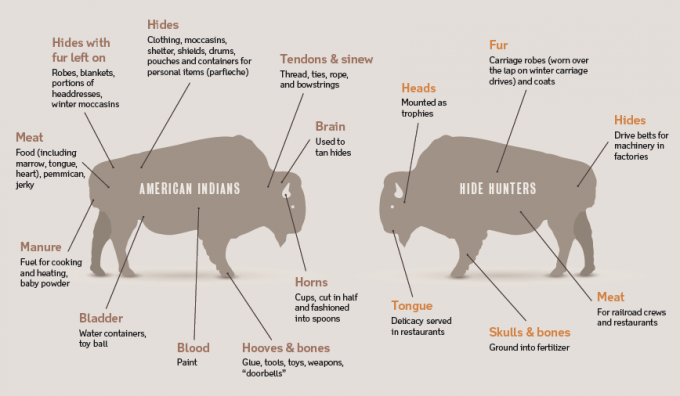Visit / Points of Interest / Museum at the Gateway Arch / New Frontiers


Visit / Points of Interest / Museum at the Gateway Arch / New Frontiers


As great changes came to the West, circumstances led to the near-extinction of the buffalo. High-powered rifles were efficient tools to kill large numbers of animals from a distance. Mass markets arose for various parts of the buffalo, and railroads enabled transportation of these raw materials to markets in the east. Professional hide hunters were very successful, driving the buffalo to the point of extinction by the early 1880s. Due to the efforts of a handful of concerned individuals, small numbers of buffalo were preserved in Yellowstone National Park, the genesis of the resurgence of the species in later years.
Americans
Hides: Drive belts for machinery in factories
Skulls and bones: Ground into fertilizer
Fur: Carriage robes (worn over the lap on winter carriage drives) and coats
Meat: For railroad crews and restaurants
Tongue: Delicacy served in restaurants
Heads: Mounted as trophies
American Indians
Hides: Clothing, moccasins, shelter, shields, drums, pouches and containers for personal items (parfleche)
Hides: Clothing, moccasins, shelter, shields, drums, pouches and containers for personal items (parfleche)
Meat: Food (including marrow, tongue, heart), pemmican, jerky
Hooves and bones: Glue, tools, toys, weapons, “doorbells”
Bladder: Water containers, toy ball
Blood: Paint
Horns: Cups, cut in half and fashioned into spoons
Tendons and sinew: Thread, ties, rope, and bowstrings
Brain: Used to tan hides
 Next Feature:
Next Feature:
You have the power to shape the future of St. Louis.
Help keep Gateway Arch National Park a vibrant symbol of local pride, global acclaim, and inspiration for millions of visitors each year.
Join today to enjoy exclusive member benefits and make a lasting impact on this iconic landmark and downtown St. Louis.
Make Your Mark